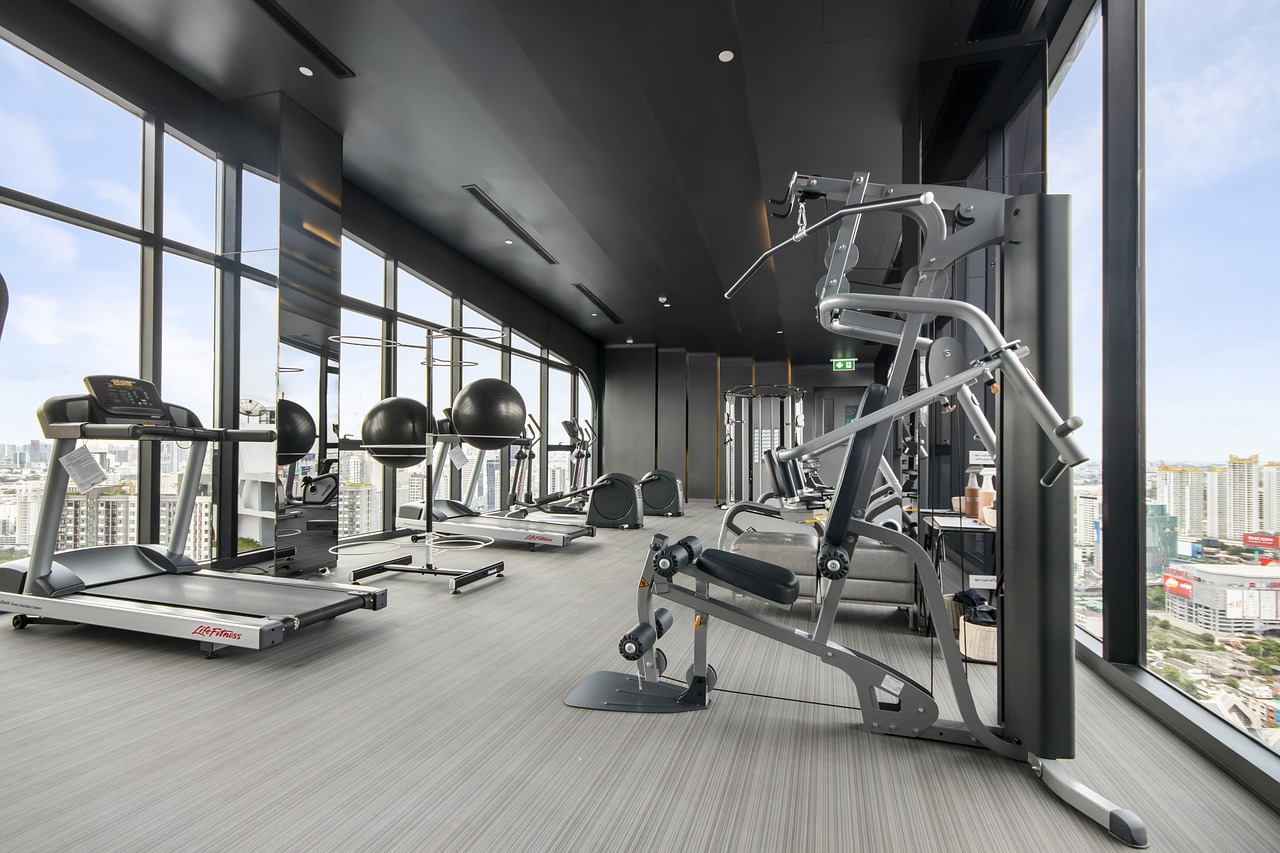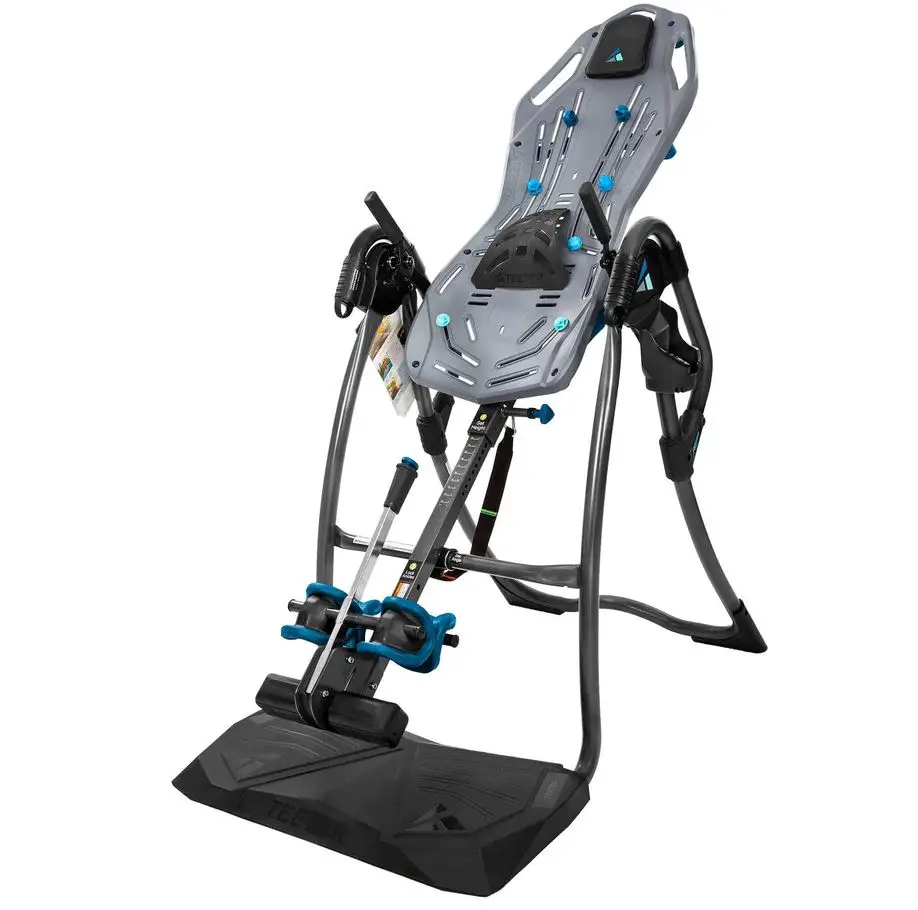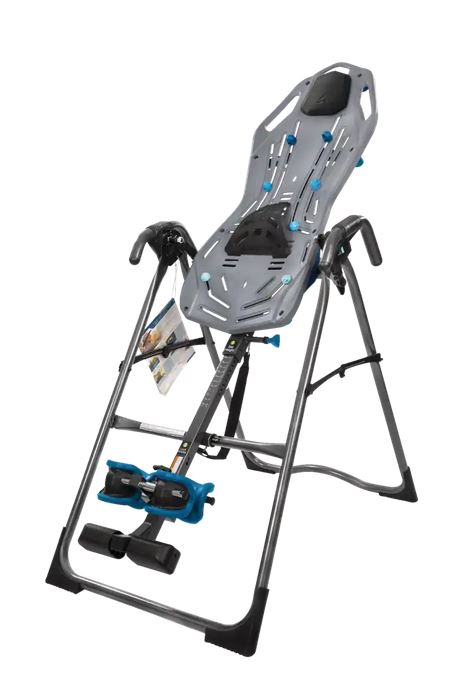Inversion therapy is a great way to release built-up stress and tension. Below are the things you need to know about inversion tables, and do gyms have them?

What Is An Inversion Table?
An inversion table is a piece of exercise equipment, usually found in a gym, that allows you to hang upside down and improve your back health. This is known as inverting—turning your body upside down.
Inversion tables are typically used to help with back pain. Many people are convinced that doing so helps to relieve compression on the spine, decompress the joints and discs, and improve blood flow to the area.
The principle behind using an inversion table is simple: When you hang upside down with all your weight supported by your ankles and legs, your spinal vertebrae will stretch apart slightly. This can relieve pressure on compressed nerves and discs, leading to pain relief.
How Inversion Tables Prevent Back Pain
Inversion tables have been used for centuries to treat back pain and other injuries and conditions. Inversion therapy works by reversing the negative effects of gravity on the body, which usually causes spinal compression and joint degeneration.
In an inverted position, your body weight is suspended from your ankles or lower legs using a padded harness, allowing your head to hang below your heart, thus reversing the effects of gravity. This can relieve pressure on compressed discs and nerves, realign joints and vertebrae, increase blood circulation, reduce inflammation, and relax muscles.
Do Gyms Have Inversion Tables?
Inversion tables are not commonly found in gyms, although they are becoming more popular. In recent years, many gyms have started adding them to their equipment lineup due to the growing number of people discovering the health benefits of inversion therapy.
The effectiveness of inversion therapy has prompted some doctors to recommend it for patients who suffer from back pain due to spinal compression, herniated disks, and other conditions. To avoid unnecessary medical costs and help patients stay fit and healthy, medical practitioners like Dr. Robert Martin, who serves on the American Chiropractic Association’s Chiropractic Sports Medicine Council, have been recommending inversion therapy for years.
Why Gyms Have Inversion Tables?
A gym can have an inversion table as part of its equipment because it helps with back pain and improves posture and flexibility. The inversion table has a lot of benefits to the body, which makes it a great tool for gyms to have, some of which include:
* Spine decompression
* Muscle relaxation
* Increased blood circulation to the brain
* Spinal disks realign themselves
* Prevention of osteoporosis
Inversion tables are also great for posture and balance, which is why they’re particularly popular with older people. Most gyms will have one or two available for members to use whenever they want.
Tips For Using An Inversion Table Safely
Since Inversion Table is a piece of equipment that allows you to flex and stretch your body, particularly for your back, it’s a great way to relax your muscles and make them more supple, which will help you when doing other activities. For example, it’s a good idea to use an inversion table before or after running on the treadmill.
If you have back problems or injury in your lower back or spine, check with your doctor before trying inversion therapy. An inversion table should never be used by someone with a heart condition or high blood pressure.
The American Chiropractic Association (ACA) recommends starting with short sessions — about one minute — at a 15-degree angle and gradually increasing time and inclination as you get more comfortable.
The ACA also suggests starting with ankles secured rather than feet, allowing faster recovery if you become dizzy or uncomfortable while inverted.
Children, older adults, and pregnant women using an inversion table are also advised to avoid using an inversion table, unless told to do so by their physician.
Moreover, if you have severe osteoporosis, an inversion table can increase the risk of bone fractures. And if you have any retinal detachment, it’s best not to use an inversion table at all.
Conclusion:
Hopefully, this post will remind you that even though inversion tables are perfect for your home, they can also be found in gyms. It can make your exercise routines more fun and bearable. So, next time you visit the gym, give an inversion table a try. They may not be for everyone, but they’re usually available to members at little or no extra charge. And who knows—maybe you will find that you prefer inversion tables to traditional fitness classes like spinning or yoga!




